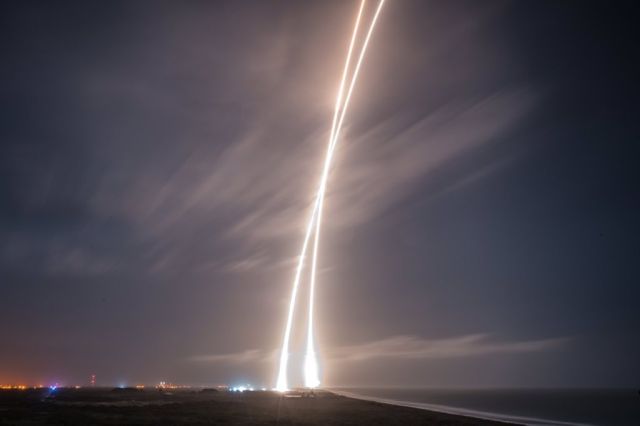
On Monday night, December 21, 2015, SpaceX’s Falcon 9 rocket soared into space, separated from the second stage, and then finally made a landing at its site in Florida. This historic flight marked a new age for the orbital economy by promising a future of significantly lower launch costs.
SpaceX has tried to land an autonomous drone ship twice, but failed. The first time the rocket hit too hard and exploded on impact and the second time it again landed too roughly, breaking its two legs and tipping over. The third attempt with a newly designated landing site less than a mile from SpaceX’s processing facilities looked almost too easy to be true.
“I wasn't at all confident that we would succeed, but I'm really glad of it,” Elon Musk, SpaceX’s founder, said. “It's been 13 years since SpaceX was started. We've had a lot of close calls. I think people here are overjoyed.”
The broadcast of the landing event showed an illuminated light falling out of the sky, smoke clearing, and then the rocket standing on the ground. Minutes prior, the Falcon 9’s first stage had rocketed approximately 200 kilometers (120 miles) into space far off the Florida coast. The ship then used nitrogen attitude thrusters to make an abrupt U-turn, fired the engines to create a reversed ballistic arc, and then positioned itself for re-entry to Earth’s atmosphere with the engines pointed towards the ground for a final landing burn.

The takeoff was closely watched as it marked a first successful return to flight for SpaceX and helped launch 11 ORBCOMM communications satellites far above Earth.
The mission marks a new space age as it delivered promises of reusable launch vehicles, a critical aspect to increasing access to space. Musk said it cost $60 million to build the Falcon 9 rocket and the propellant itself only cost $200,000. With this, there is the potential to substantially cut the costs of spaceflight by 10 times.
Musk has long been advocating for reusability even as NASA moved in the opposite direction with its new rocket, the Space Launch System which is entirely expendable, including its four RS-25 engines. Those same engines were reused after each space shuttle flight.
After unveiling SpaceX, Musk made it clear that his ultimate goal was to establish a colony on Mars, ensuring the survival of human race there if Earth were to face some sort of extinction.
“This is a critical step along the way toward being able to establish a city on Mars,” he said Monday night. Reusability is crucial to making a Mars colony happen, he noted, because with only expendable rockets, any type of Mars development would prove unreasonably expensive. “That's what this was all about,” Musk said.
Source: Ars Technica
Advertisement
Learn more about Electronic Products Magazine





